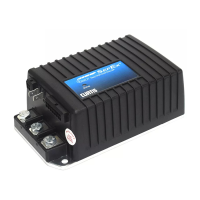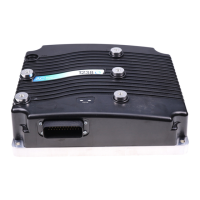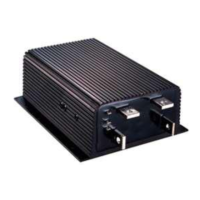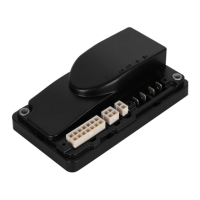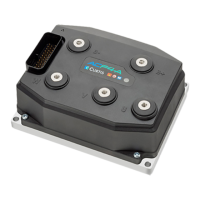28
Curtis 1230 Manual, Rev. C
3 — PROGRAMMABLE PARAMETERS: Throttle Parameters
THROTTLE MENU
ALLOWABLE
PARAMETER RANGE DESCRIPTION
Throttle Type 1–5 The 1230 controller accepts a variety of throttle inputs; see throttle wiring
section, pages 14–18. The throttle type parameter can be programmed as
follows:
1 2-wire rheostat, 5kΩ–0 input
2
single-ended 3-wire 1kΩ–10kΩ potentiometer,
0–5V voltage source, or current source
3 2-wire rheostat, 0–5k
Ω input
4 wigwag 3-wire 1k
Ω–10kΩ potentiometer,
or 0–5V voltage source
5 three-step switch throttle (Note: with a Type 5 throttle,
the remaining throttle parameters do not apply.)
Throttle Deadband 0–30 % Defines the throttle pot wiper voltage range that the controller interprets
as neutral. This parameter is especially useful with throttle assemblies that
do not reliably return to a well-defined neutral point, because it allows the
deadband to be defined wide enough to ensure that the controller goes
into neutral when the throttle mechanism is released. See Figure 14.
The throttle deadband is adjustable from 0% to 30% of the nominal
throttle wiper range; it is typically set at 10%. The nominal throttle wiper
voltage range depends on the throttle type selected; see Table 1.
Throttle Max 40–100 % Defines the wiper voltage or resistance required to produce 100% control
-
ler output. Decreasing the throttle max setting reduces the wiper voltage or
resistance and therefore the full stroke necessary to produce full controller
output. This parameter allows reduced-range throttle assemblies to be ac-
commodated. See Figure 14.
The throttle max is set as a percentage of the nominal throttle wiper
voltage range, which depends on the throttle type selected; see Table 1.
Throttle Map 5–90 % Modifies the vehicle’s response to the throttle input. Setting the throttle
map at 50% provides a linear output response to throttle position. Values
below 50% reduce the controller output at low throttle settings, providing
enhanced slow speed maneuverability. Values above 50% give the vehicle
a faster, more responsive feel at low throttle settings. See Fig. 14.
The value is set as a percentage of the throttle’s full active range,
which is the voltage or resistance between the programmed throttle dead
-
band value and the programmed throttle max value.
Pot Low Check
OFF/ON The pot low check, when programmed On, checks the voltage at the wiper
input (J1 Pin 6) and faults the controller if this voltage drops below 0.06 V.
It is recommended that the pot low check feature be programmed On in
any application where a resistive throttle is used. This will provide maxi-
mum throttle fault detection and provide the safest possible vehicle opera
-
tion. However, disabling the feature is useful when single-wire ground-ref
-
erenced voltage throttle inputs are used.
For Throttle Type 4, when pot low check is programmed Off the
automatic pot high check is also disabled. This allows the use of wigwag
throttles without series resistors.
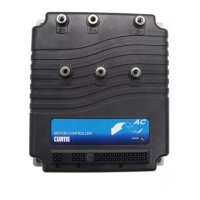
